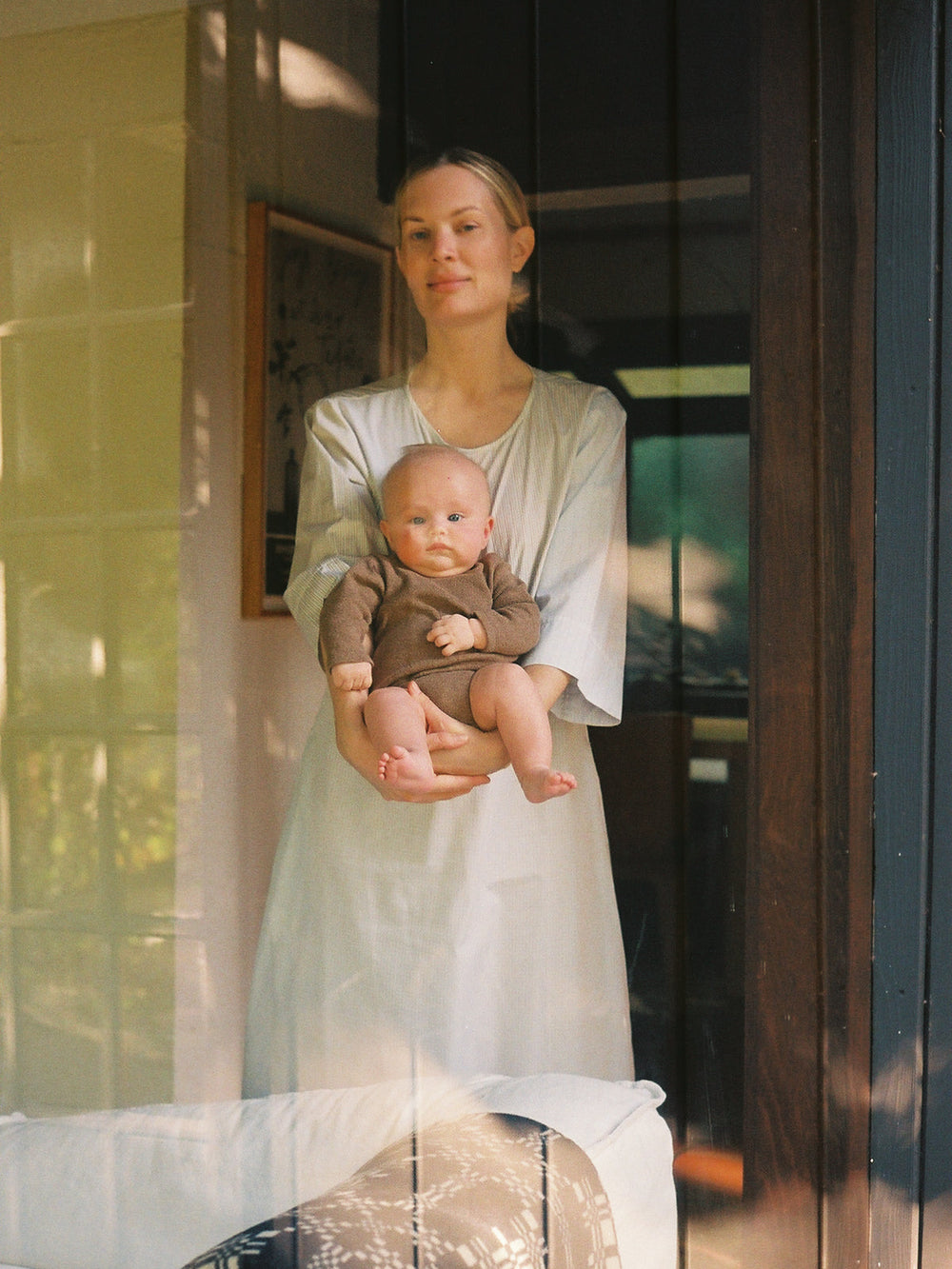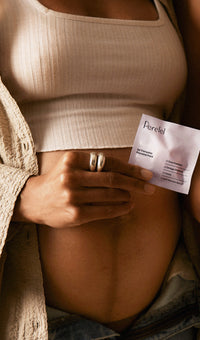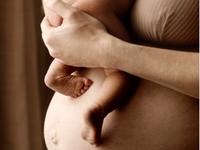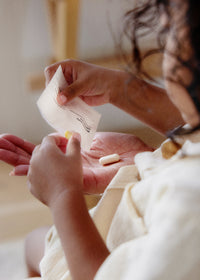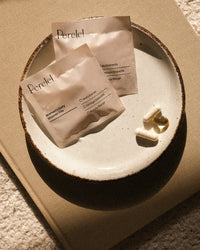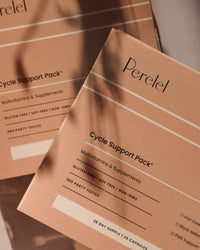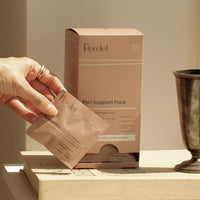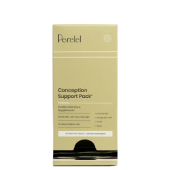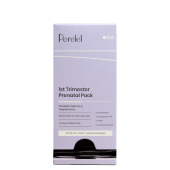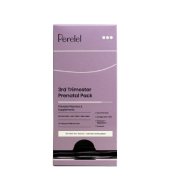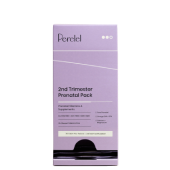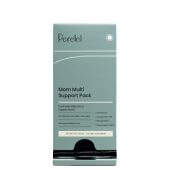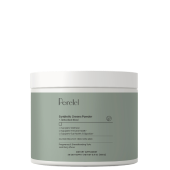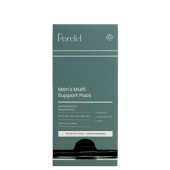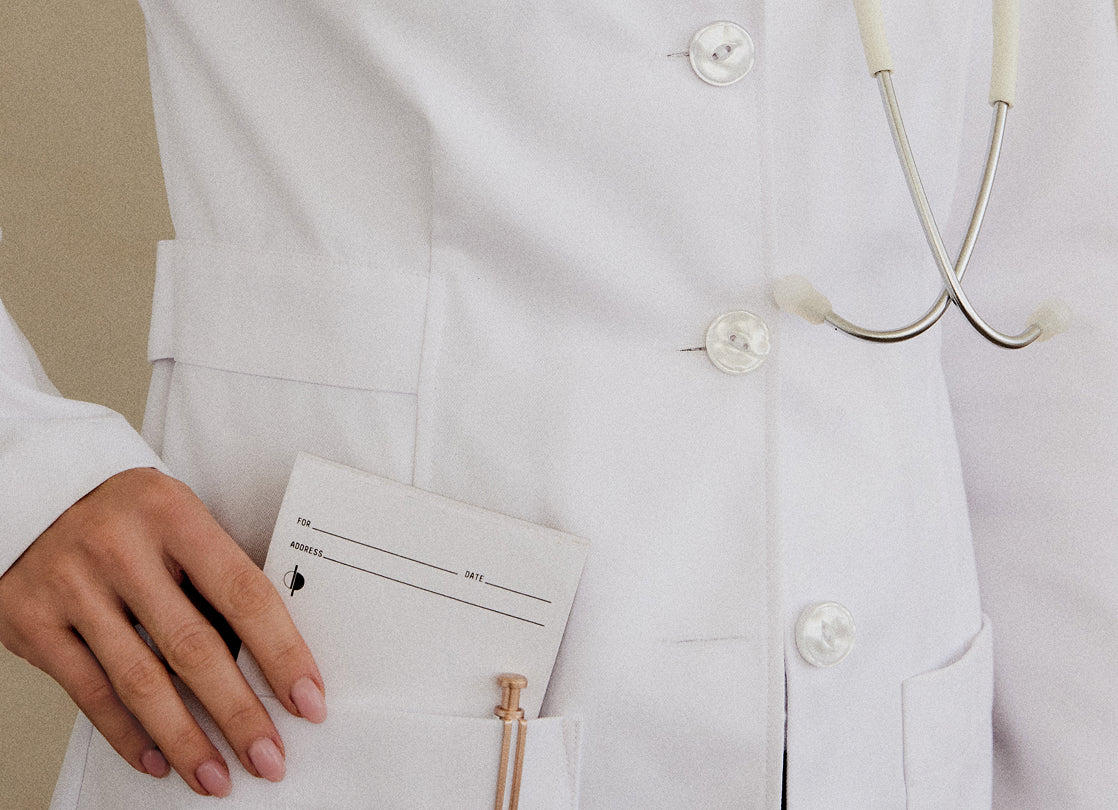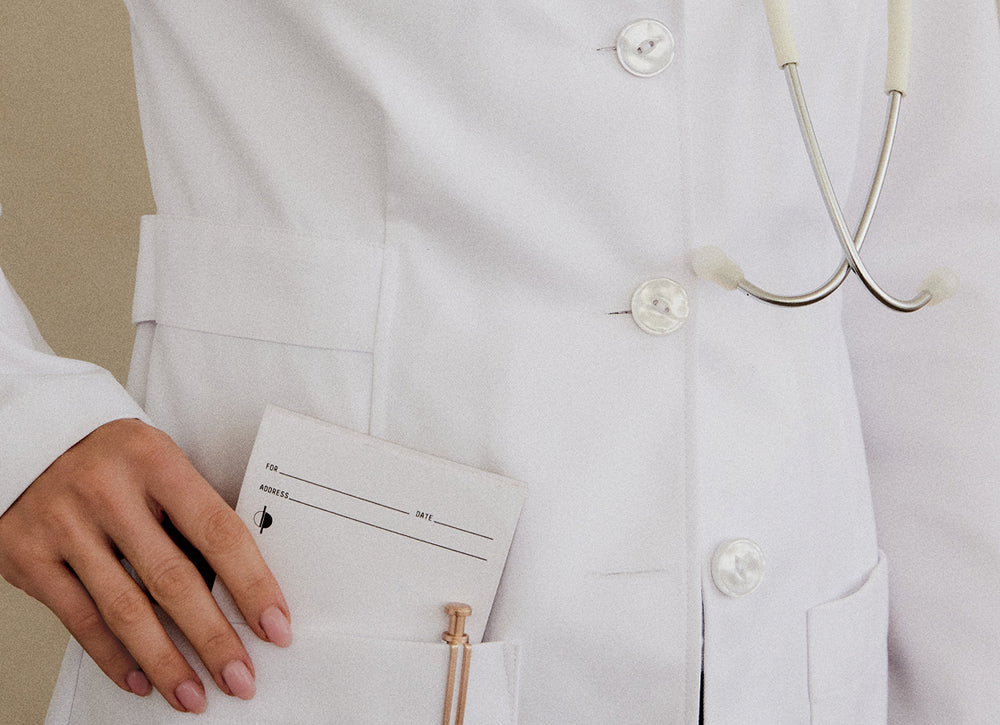We feel each other's pain. We communicate “been there” with a hug. Being a woman is characterized by the shared experiences of what it means to inhabit bodies and navigate conditions that are still clouded with outdated taboos.
Our series But Really, How Are You? is dedicated to shining a light on these stories at the intersection of reproductive and mental health, from postpartum depression and fertility detours to the long fight for an endometriosis diagnosis. Our hope is to bring radical visibility to the struggles that, as women, inherently connect us—but so often go unsaid.
Today, we feature the words of Kate Parfet Duncombe, a writer, model, founder, and reproductive health advocate who lives in Los Angeles.

Six years ago, I spoke with my then General Practitioner about what I now know to be common endometriosis symptoms. He insisted I had IBS and sent me to a gastroenterologist. When I told that doctor about my paralyzing menstrual cramps and the fact that I was bleeding through my pants twice a month, he advised me to wear dark-colored clothing. At the time, I felt embarrassed, almost ashamed for making a big deal “out of nothing.” In hindsight, his behavior infuriates me. I wish my experience was an anomaly, but sadly I’ve heard countless stories of medical gaslighting in the women’s health and fertility spaces.
Two years later, I went in for a routine fertility consultation. An ultrasound revealed I not only had a very low ovarian reserve and was not a candidate for egg freezing, but also that I had large endometrioma cysts on both ovaries.
I met my now partner shortly thereafter. I can vividly remember our walk around Lake Hollywood where I told him I might not be able to conceive. He was sensitive, supportive and willing to try however we could. In 2021, I completed my first IVF cycle. Sadly, our one embryo did not make it to blastocyst. Exhausted, but steadfast, I started weekly acupuncture sessions and decided a laparoscopy was necessary for a chance at becoming a mom.
My surgeon found and removed an extensive amount of endo from my ovaries, bladder, and rectum. The surgery itself took a little over five hours. I spent the first week recovering in bed. From there it took another six weeks to fully heal and resume my menstrual cycle.
There was always a chance that my endo could return post-surgery. At the time, I was comforted by data on the procedure, which indicated that it was unlikely to grow back in the next one to five years, if at all. I was excited to live pain-free, or at least with a dramatically reduced level of pain.
I had a feeling something was off about a month post-op when my lower back started spasming, a symptom that had originally been alleviated by the surgery. Within forty days, a new endometrioma had grown on my left ovary. While unlucky and disappointing, my surgeon did remove an extensive amount of endo without interfering with my already small ovarian reserve, so for that I was grateful.
In what felt like our final hour, now with our third (and last) fertility doctor and after nearly two years trying to conceive both naturally and via IVF, I made it to my second egg retrieval. Three eggs were retrieved and only one embryo was made. After ten long days of waiting, we found out our embryo was a genetically viable male.
But we weren’t out of the woods yet. I still had to undergo two months of Lupron hormone injections to suppress the endo ahead of a transfer. The side effects mimicked a difficult menopause–hot flashes, night sweats, extreme irritability. Even with familial support, I felt so far from myself, almost dissociative. There were days I could not be around people, in fear that I might not be able to control my emotions.
In order to work through and better understand my experiences, I turned to writing, which has always come naturally to me as a form of art therapy. I explored my feelings around healing and trauma, betrayal and trust, and loss of the ability to conceive naturally. I wrote about my grief over failed IVF cycles and ultimately, forgiveness for myself and my body. It wasn’t far into the writing process that I realized I had enough to make a book and give these subjects a larger platform and opportunity to reach others.

Eventually, we made it to transfer day, and two weeks later, confirmed a healthy pregnancy. While naturally elated, we had so many years of false starts and failures that a sense of dread lived in my chest during pregnancy. I had grown so accustomed to being let down, that I almost expected someone or something to take my good fortune away. If I’m being honest, I also felt some guilt that it happened for me and not for a friend or family member who tried just as hard. In these moments, I tried to give myself the grace to feel what I needed to without judgment.
Now, a little over three months postpartum, I’m settling into motherhood with my sweet boy, Louis, but not without new questions regarding my reproductive health. While I wait for my period to return, I’m assessing long-term options like a second, more aggressive surgery. The emotional reality of wiping out my ovarian reserve feels heavy, but the ability to live pain-free will undoubtedly make me a more present mother for my son.

Throughout this process, I learned to advocate for myself, to give myself total permission to get second opinions, and to only continue with doctors I trust. I also learned to persist. I dug into my insurance plan to understand what was covered and how I could best utilize those services. I researched resources like Fertility IQ to explore webinars and verified doctor and clinic reviews. I really got to know my period. I reached out to my network. I couldn’t believe how many friends and friends of friends were willing to offer resources and support. Through these conversations I felt far less alone, realizing endometriosis and other causes of infertility were way more common than we are led to believe.
One of the most startling realizations I had during this whole journey is that only once fertility enters the equation do diseases like endometriosis and PCOS receive more attention. It can feel like it’s less about a woman’s right to lead a healthy, productive life, and more about fulfilling the societal expectation to make babies. The degree to which women’s health issues are stigmatized and the patient’s needs devalued is unacceptable.
Living with endometriosis has forced me to sit with the unknown. My default thinking is black and white—but with endo, I exist in the gray. Each ultrasound could, and usually does, present a curveball. My best-laid plans are ever-changing and I am getting better with going with the flow and not sweating the small stuff. I’m grateful for what I have and the potential the future holds.
I hope to help spark conversations that go beyond one-size-fits-all motherhood narratives and start normalizing reproductive health taboos. We need to be talking about infertility, miscarriage, IVF, egg and sperm donation, surrogacy, the choice to have children later in life, and the choice to not have children at all. We need to be more open and we need to be sharing more, without fear of judgment or shame, in order to educate and support each other.
Learn more about the infuriating history of endometriosis diagnosis—and how to advocate for your symptoms.


